Description
Introducing the book The Time of the Hero by Mario Vargas Llosa
The Dog Years by Mario Vargas Llosa (1936), the first published novel by a Peruvian novelist and essayist, won the Nobel Prize in Literature. Yosa is one of the most respected writers of his generation in South America.
The book is narrated in the atmosphere of a military school, and given that Yosa himself studied in such schools for some time, perhaps a look at his own past at that time is reflected in the title of the book.
This military school is a symbol of the whole country of Peru and its social structure, and in this book, Yosa, like some of his other works, criticizes this society and its military rulers. In part of the book we read: Kaba could not recognize the sound.
The Time of the Hero Book
He looked at the yard. In the dim light of the lights around Sun Square, which lay between the sanatoriums and the meadow, there was no movement. The three concrete buildings, which were the fifth-year student dormitory, seemed faded and unreal under the fog. He went out and stood behind the wall of the sanatorium for a few moments.
Now he could not count on anyone. Even Jaguar was safe. He mourns the students who were asleep, the mourners of the sergeants, and the mourners of the soldiers who were drowned in their dormitories on the other side of the stadium. He knew that if he did not walk, he would die for fear. He estimated the distance: he had to cross the courtyard and the square;
Then, in the shade of the meadow, he passed by the dining hall, the headquarters, and the officers’ sanatorium; Finally, he passed another courtyard, which was small and had a concrete floor facing the classroom building. The danger ended there, because the patrols did not go that far.
Then the way back to the sanatorium began. His heart wanted to lose his will and imagination and execute the plan just like a blind machine. Sometimes, for days on end, he would look for something that had already been prepared for him and would do it without thinking. This time it was different. What was happening tonight was imposed on him. His mind was working unusually well and he was well aware of what he was doing.
The Time of the Hero
In praise of twenty-six-year-old Yosa
The Year of the Dog, entitled La Ciudad y Los Perros (Spanish: La ciudad y Los Perros), also known as The Age of the Hero, was the first novel by Mario Vargas Llosa, a Peruvian author, written in 1963. Is.
Yosa is the first Latin American writer to win the 2010 Nobel Prize in Literature. Except for The Dog Years, Yosa is probably associated with his other major works, such as Sur Boose, The Cathedral Conversation, Death in the Andes, Who Killed Palomino Muller, The Storyteller, and especially The Apocalypse War. »You know.
Yosa has a very attractive personality. In addition to the title of Nobel Prize-winning author, add the titles of journalist, essayist, politician and university professor! Born in Peru in 1936, he graduated with a degree in liberal arts from the University of Limassol and received his doctorate from the University of Literature in Spain.
Yosa has worked in the field of theater, playwriting, news coverage of the war scene and even the presidential election, and has been a concerned and multidimensional human being throughout his life, which is why he has a rich and active background, behind unique and mature works. He is located.
As a teenager, Yosa took his first steps in literature by publishing his poems in La Coruna, and then, during his student days in Madrid, published his first collection of short stories.
But Yosa’s first solid step on the path to writing dates back to his twenty-sixth year and writing this novel The Dog Years. Today, Yosa, along with Carlos Fuentes and Gabriel Garcia Marquez, is one of the giants of Latin American literature who has played an important role in introducing it to the world. Yosa can be considered one of the authors whose works reflect the principles of the new novel.
At the same time that he places a real context as the background of his story, he is faithful to the task of literature to represent reality, while being dependent on the truth, he avoids seeing it one-dimensionally and in black and white, he explores its various aspects. It does, uses techniques such as time jumping and nonlinear narration and changing angles, blending different forms and then leaving the reader completely free to perceive and judge without injecting personal ideas into the mind.
These features make it possible to place his works in the category of “postmodern” works. Many of these features are evident in the novel The Dog Years. This memo deals with the printed version of the Dog Years, translated by Ahmad Golshiri and the Negah Publishing Institute. But what makes Yosa describe these years as a “dog”?
High school or barracks?
In answer to the above headline question I have to say both! In fact, the idea of the dog years relates to the period that Yosa spent from the age of 14 to 16, that is, from 1950 to 1952, at the military school of Leoncio Prado; But this book is not exactly a biography or memoir, but Yosa narrates the events that took place in that school in a violent and military context under the influence of that environment and in a strange and complex way.
The book’s main themes stem from injustice, violence, and the blocking of healthy human relationships, and the atmosphere in the school and the way its officials treat students and then students who exchange cigarettes and alcohol and beat new entrants who are not entertained. , Is the law and they call each other “dogs”, in a wild and violent way and sometimes shocking and bloody! Described:
A man who has prepared himself in advance is worth two men, you guards go to the ground and listen to the bell. As soon as you see them, shout for us to come out. Bring things to throw, crumple your toilet paper, and squeeze your fists well, then your fists will tighten. Tie a razor to the tip of your shoes so that, like a rooster fight, it has the shape of a rooster’s thorn. Fill your pockets with stones, do not forget your testicles, a man should take care of his testicles more than his soul!
Perhaps if a classic novel with a linear and static narrative had told such a story, in spite of all the small and big events that injected immediate excitement into the reader, the novel would still have progressed at a relatively slow pace and become boring. But what distinguishes Yosa’s narrative from what might be imagined?
Yosa-style characterization
Before summarizing the story, I need to emphasize that you will most likely need a pen and paper when reading this book, as the story is not going to be easy to introduce its characters and reveal their secrets. Slow down!
One of the characteristics of Yosa’s various works is that the characterization in them is not such that the author, like in the classic novels, explains a world and makes a presupposition for the person, but the reader throughout the story character through behavior, encounters, tone, choices and especially various titles. He knows them so that he can better understand different aspects of them in their lives and be free to perceive that character and judge him in his own way. The events that take place for his characters go and show them as they are.
It can be said that there are almost four main characters in the story whose mental voice drives the narrative: “Jaguar”, “Ricardo”, “Boa” and Alberto “. Each of these characters has different characteristics in terms of family life and inner analysis of personality. For example, we know Alberto, who has a writing spirit and seems to have left his youthful spirit in him, as a “poet”:
If I had money and a big car like that, I would not have entered the military school by force of arms. What good is money when it’s supposed to be in front of people like everyone else? I remember once Mofarfari asked the poet: “What are you doing here? You have to be in high school!
But we have to find out for ourselves which title is related to which character through the lines of the story. Write down the names and, if necessary, go back and review this fascinating and complex narrative from the beginning.
When the forms overtake each other!
In addition to the non-linear narrative of the novel, the angle of view is divided between the limited omniscient and the first-person narrators. In some places, the story is told in the language of the omniscient, and then in a different bold font, one of the narrators speaks without delay or introduces himself. This feature has caused us, while seeking to complete our mental puzzle of the events of the story, at the same time the riddle of discovering the identity of each of the narrators engages our minds and in fact different aspects of the story are processed in one in our brains.
This method, in order to advance the narration along with the narration, has caused the dog years in its womb to have two main forms with two different speeds that occur at two different times and move the story in parallel so that in the final parts, one earlier Reaches the destination from another!
Understanding these features of form and characterization certainly requires patience in reading this novel, and of course the great Josiah cleverly placed a riddle in the heart of the story to keep the reader eager to discover it.
However, wherever you run out of patience and you are very confused, remember that although other nested sub-forms can be discovered in the heart of this novel, and the main and sub-characters are not few in number and many names come and go, but dog years can be compared to these complexities. Call it Yosa’s other novels, such as Conversation in the Cathedral – in which a revolution with all its details and people is split! So do not despair and keep going and go back if necessary.
Kill so you don’t get killed!
Various interpretations can be made of the theme of the dog years.
On the one hand, the school can be considered as a permissible part of the whole of all societies that are under the domination of oppressive and authoritarian rule, and students can be considered the symbol of different strata of that society, including artists, workers, etc., who are forced under all this oppression and savagery. Involuntarily retaliating and seeing for themselves that they come, they too are not behaviorally separate from the regime, and wild times have made them part of the system.
But in a simpler and more humane way, the dog’s years can be seen as a narrative of a corrupt generational adolescence that can be transformed into a critical age of puberty and personality formation, under the harsh school education system:
You never argued, am I right?
“Only once,” said the slave
+ Here?
– No, before
“That’s why everyone rides,” said Alberto. They know you are a coward. If you want to be respected, rub someone’s nose every once in a while!
In either case, the critical aspect of the novel is at the heart of the story, a critique of the educational system of Leoncio Prado’s school, which, after the book was published, read a list of Yosa’s poor grades in a course of study and then to The burning of thousands of volumes of dog years shows its criticism!
A bitter and savage story that can be summed up in two lines, but Yosa has artistically turned it into a multifaceted masterpiece with social critiques and psychological dimensions, a masterpiece that, in his own words, “Why Literature?” It shows us that “literature is the food of unhappy and rebellious souls,” and that by reading it one can live the inanimate lives, with all their bitterness, and experience looking at the world from a different, albeit blurred, perspective:
You are a military here, what you want and what you do not want, and in the army what is important is to be brave, to have courage and heart, you know what I want to say? Ride them before they ride. There is no other way.
The Dog Years by Mario Vargas Llosa is one of South America’s most important contemporary novelists and essayists, and one of the most authoritative writers of his generation. Yosa won the 2010 Nobel Prize in Literature. Describing his work, the Nobel Institute writes: “To show the power structure and the winning images of individual resistances, revolts and defeats.”
The Time of the Hero is a very serious and violent black novel in which the author hides the true identity of the main characters of the book until the last moment in various events and challenges the reader to discover the truth. For this reason, among the works of Mario Vargas Llosa, this novel can be considered as one of his hard works.
Vargas Llosa belongs to a generation of new writers who pay more attention to external realities. These writers consider the attitudes of introverted writers to be outdated, belonging to the past, writers who are interested in inner reality, and the issues they raise are generally based on conscience or spirit.
Yosa also believes that literature is the most extraordinary thing in the world, and says that the novel is presented in a larger and more comprehensive way than the number of levels of reality it presents. We see the same cases in the book of dog years, which we will examine in the following.
The book begins with a brief account of the author’s life and the story that led to the novel: “Mario Vargas Llosa was born in the archipelago of Peru. His childhood was spent with bitterness, and the two years he spent in high school had a profound and lasting effect on him. “His Darwinist view of life is the result of two years of experience, a principle according to which the weak are crushed underfoot and only those who are equipped with the blackmail of the time survive.”
In another section about the book, we read:
One of the hallmarks of the dog years is violence. According to Bargas Llosa, in societies based on injustice, not only is there no room for dialogue and debate, but there is no room for human communication.
1- Introducing the book The Time of the Hero on YouTube
2- Introducing the book The Time of the Hero in Aparat


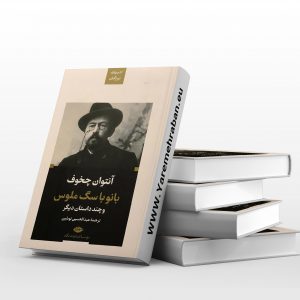




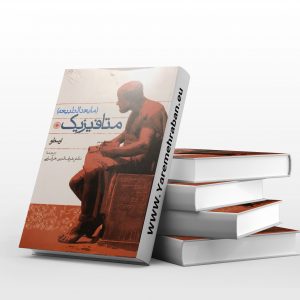
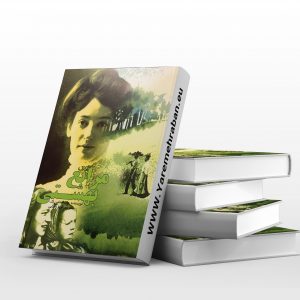
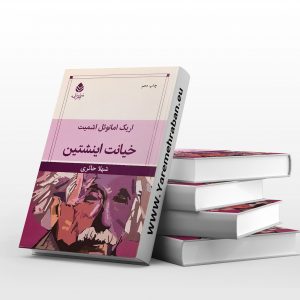

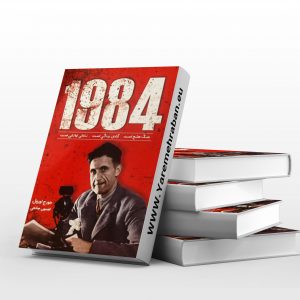
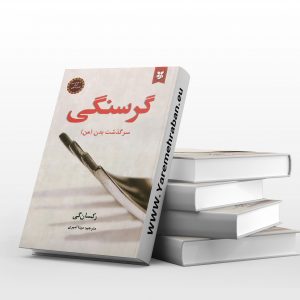

Reviews
There are no reviews yet.